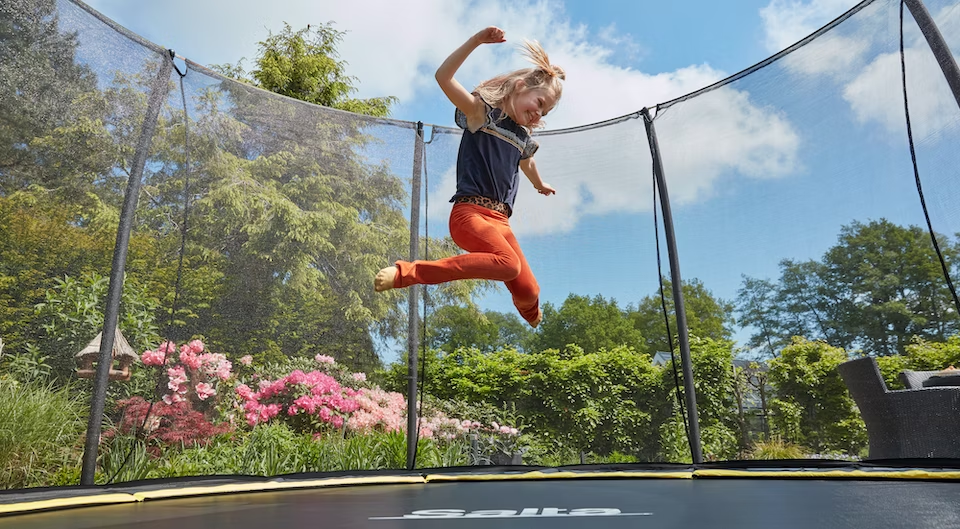
Trampolines have become increasingly popular over the years, with more and more families investing in one for their backyard. They provide a fun form of exercise and entertainment for both children and adults alike. Trampolines come in various shapes and sizes, and each type serves a different purpose. In this article, we will explore the different types of trampolines and their uses.
Round Trampolines
Round trampolines are the most common type of trampoline and are often used in backyards for recreational purposes. They come in a range of sizes, from small 8-foot diameter trampolines to larger 16-foot diameter trampolines. Round trampolines are designed with a circular frame and are perfect for jumping, flipping, and performing tricks. These trampolines are generally less expensive than other types of trampolines and are ideal for families with younger children.
One of the advantages of round trampolines is that they have a more consistent bounce. This is because the springs are arranged evenly around the frame, which allows for a more controlled and predictable bounce. Round trampolines are also great for beginners because they offer a larger jumping area and are less likely to tip over.
Rectangular Trampolines
Rectangular trampolines are often used by athletes and gymnasts for training purposes. They are designed with a rectangular frame and are larger than round trampolines. The shape of the trampoline allows for a more powerful bounce, which makes it perfect for practicing flips and other tricks. Rectangular trampolines are also ideal for families with older children who are interested in gymnastics or other sports.
One of the advantages of rectangular trampolines is that they provide more jumping space. This is because the springs are arranged in a way that allows for a longer and stronger bounce. Rectangular trampolines are also more durable than round trampolines and can withstand more weight.
Square Trampolines
Square trampolines are a less common type of trampoline but offer a unique experience for users. They are designed with a square frame and a smaller jumping area than round and rectangular trampolines. Square trampolines are perfect for smaller backyards and are great for families with limited space.
One of the advantages of square trampolines is that they offer a more controlled bounce. This is because the springs are arranged evenly around the frame, which allows for a more predictable bounce. Square trampolines are also great for younger children because they offer a smaller and safer jumping area.
Mini Trampolines
Mini trampolines, also known as rebounders, are designed for indoor use and are often used for fitness and exercise. They are smaller than other types of trampolines and are perfect for apartments or small living spaces. Mini trampolines are also great for those who want to exercise without putting too much stress on their joints.
One of the advantages of mini trampolines is that they are portable and easy to store. They can be used for a variety of exercises, such as jogging, jumping jacks, and balance exercises. Mini trampolines are also great for those who want to improve their cardiovascular health and strengthen their muscles.
Water Trampolines
Water trampolines are designed for use in bodies of water, such as lakes or oceans. They are often used for recreational purposes and are great for families who enjoy spending time on the water. Water trampolines are designed with a sturdy frame and a jumping surface that is made out of waterproof materials.
One of the advantages of water trampolines is that they are a fun way to exercise and cool off during hot summer months. They can be used for jumping, diving, and performing tricks. Water trampolines are also great for families with children who are comfortable swimming in deeper water.
In-ground Trampolines
In-ground trampolines are designed to be installed flush with the ground. They are becoming increasingly popular because they offer a safer alternative to traditional trampolines. In-ground trampolines are often used for recreational purposes and are great for families who want a trampoline that is both fun and safe.
One of the advantages of in-ground trampolines is that they are less likely to tip over and cause injury. They are also more discreet than traditional trampolines and can be incorporated into the backyard landscape. In-ground trampolines are also great for families who want a trampoline that is accessible for all ages and abilities.
In conclusion, trampolines come in a variety of shapes and sizes, each serving a different purpose. Round trampolines are great for recreational use, rectangular trampolines are ideal for athletes and gymnasts, and mini trampolines are perfect for indoor exercise.

